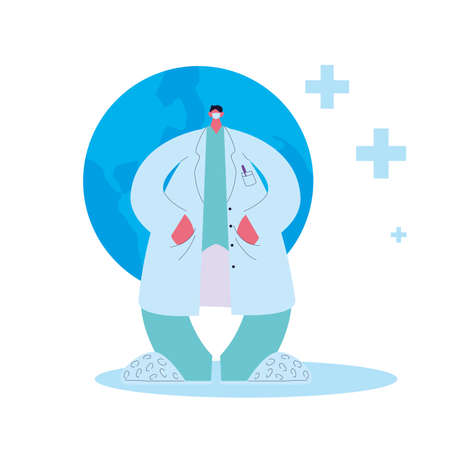Assessment of Dressing and Grooming Skills
Occupational therapists play an important role in helping individuals gain independence in dressing and grooming. Before creating a therapy plan, it’s essential to understand each person’s unique strengths and challenges. This is done through careful assessment using a variety of tools and strategies. Here’s how occupational therapists evaluate dressing and grooming abilities:
Overview of Evaluation Tools
Occupational therapists use both standardized tests and informal observations to assess clients’ skills. Some common tools include:
| Assessment Tool | Description | What It Measures |
|---|---|---|
| Kohlman Evaluation of Living Skills (KELS) | A test that looks at basic living skills needed for independence | Dressing, grooming, safety, self-care |
| Functional Independence Measure (FIM) | A scale that rates a person’s ability to perform daily activities independently | Self-care tasks like dressing, bathing, and grooming |
| Barthel Index | A checklist used in hospitals and rehab centers to track progress over time | Feeding, bathing, dressing, toileting, mobility |
| Canadian Occupational Performance Measure (COPM) | An interview-based tool that helps clients set goals based on what matters most to them | Personal care routines, including dressing and grooming |
Strategies Used During Assessment
Besides formal tools, occupational therapists gather information through:
- Direct Observation: Watching the client as they attempt to dress or groom themselves in real-life situations.
- Client Interviews: Asking questions about what feels easy or difficult during daily routines.
- Family Input: Talking with family members or caregivers for additional insights.
- Environmental Assessments: Looking at the home setup for barriers like cluttered spaces or hard-to-reach items.
- Movement Analysis: Observing how a person moves their arms, hands, or legs during dressing tasks.
Common Barriers Identified in Assessment
| Barrier Type | Examples | Impact on Dressing & Grooming |
|---|---|---|
| Physical Limitations | Pain, limited range of motion, weakness after injury or surgery | Trouble reaching clothing or fasteners; difficulty brushing hair or teeth |
| Cognitive Challenges | Trouble with memory, problem-solving, or following steps due to conditions like stroke or dementia | Forgets order of tasks; may put clothes on backward; misses parts of grooming routine |
| Sensory Issues | Sensitivity to touch or textures; visual impairment; hearing loss | Avoids certain clothing; struggles to see stains or zippers; may not notice if clothes are inside out |
| Environmental Barriers | Narrow spaces, poor lighting, lack of adaptive equipment at home | Makes it harder to move safely or reach needed items for dressing and grooming |
The Importance of Individualized Assessment
No two people are exactly alike. That’s why occupational therapists personalize their assessments for each client. By combining different tools and strategies, they get a clear picture of what’s working well and what needs extra support. This careful evaluation sets the stage for successful interventions that help clients build confidence and independence in their daily lives.
2. Client-Centered Goal Setting
Why Client-Centered Goals Matter in OT
In occupational therapy, client-centered goal setting is at the heart of promoting independence with dressing and grooming. This approach ensures that each person’s unique needs, preferences, and values are respected throughout their rehabilitation journey. Instead of a one-size-fits-all plan, therapists work together with clients to create meaningful goals that truly matter to them.
Collaborative Goal Development
The process begins by having open conversations with clients and their families. Occupational therapists ask about daily routines, cultural traditions, and specific challenges faced during dressing or grooming. For example, some individuals may prioritize being able to tie shoelaces independently, while others may value using makeup or shaving without help.
Sample Questions Therapists May Ask:
| Area | Example Questions |
|---|---|
| Preferences | What part of your morning routine is most important to you? |
| Cultural Considerations | Are there any clothing or grooming traditions you would like to maintain? |
| Functional Priorities | Which dressing tasks do you find most challenging right now? |
Setting Achievable and Meaningful Goals
Once these preferences and priorities are identified, therapists help clients break down larger goals into smaller, manageable steps. This makes progress more attainable and encourages motivation. For example, instead of setting a broad goal like “dress independently,” a client might start with “put on a T-shirt without assistance.” As confidence grows, the goals can be adjusted.
Goal-Setting Example Table:
| Main Goal | Step-by-Step Goals |
|---|---|
| Dress Independently |
|
| Groom Independently |
|
Cultural Sensitivity in Goal Setting
Cultural background plays an essential role in what is considered meaningful. For instance, some clients may have specific attire for religious or traditional reasons, such as wearing a hijab or turban. Occupational therapists must be mindful and respectful of these practices when helping set goals, ensuring interventions fit within the client’s cultural context.
Key Takeaways for Client-Centered Goal Setting:
- Goals are created together with the client (and family when appropriate)
- Cultural values and personal preferences are respected at all times
- Larger goals are broken down into smaller, realistic steps to ensure success and build confidence

3. Adaptive Techniques and Assistive Devices
Occupational therapists often introduce adaptive techniques and assistive devices to help individuals dress and groom themselves more easily. These tools and strategies are designed to promote safety, efficiency, and independence, especially for people with limited mobility, strength, or coordination.
Common Adaptive Techniques
Adaptive techniques focus on making daily routines simpler and safer. Therapists teach clients step-by-step methods to reduce physical strain and improve independence. For example, instead of pulling a shirt over the head, a person might learn to dress one arm at a time while seated for better balance. Using a mirror to check grooming tasks or sitting while brushing hair are also helpful modifications.
Examples of Adaptive Dressing Methods
| Technique | Description |
|---|---|
| Sit-to-Dress Method | Sitting down while dressing reduces risk of falls and conserves energy. |
| One-Handed Dressing | Using the stronger hand to pull clothing over the weaker side first. |
| Clothing Staging | Laying out clothes in order of use before starting the dressing process. |
Popular Assistive Devices for Dressing and Grooming
There are many devices available that can make getting dressed and groomed easier for people with different needs. Occupational therapists match these tools to each individual’s abilities and goals, providing hands-on training to ensure safe use.
| Device | Purpose | How It Helps |
|---|---|---|
| Dressing Stick | Helps reach and maneuver clothing items like shirts or pants. | Makes it easier to pull clothes on or off without bending or twisting. |
| Sock Aid | Assists with putting on socks independently. | Reduces need for bending down to reach feet. |
| Button Hook/Zipper Puller | Aids in fastening buttons or zippers with limited dexterity. | Makes small fasteners manageable for those with arthritis or weak grip. |
| Long-Handled Shoe Horn | Eases putting on shoes without excessive bending. | Prevents strain on back and hips during shoe donning. |
| Electric Toothbrush or Razor | Simplifies grooming tasks like brushing teeth or shaving. | Requires less effort and movement, especially beneficial for reduced hand strength. |
| No-Tie Elastic Shoelaces | Keeps shoes secure without tying knots. | Saves time and supports those who struggle with fine motor skills. |
Training and Practice with Adaptive Tools
An important part of occupational therapy is not just introducing these tools but also practicing their use in real-life situations. Therapists guide clients through practice sessions at home or in clinics, giving tips for overcoming obstacles. This hands-on approach builds confidence, ensures correct technique, and helps each person develop new habits that support everyday independence in dressing and grooming.
4. Motor and Cognitive Skills Training
Occupational therapy plays a key role in helping individuals become more independent with dressing and grooming by focusing on both motor and cognitive skills. These two skill areas are essential for managing daily self-care routines safely and efficiently.
Motor Skills Training
Fine motor skills, strength, coordination, and balance are all important for successful dressing and grooming. Occupational therapists use a range of activities to help clients improve their abilities, such as:
| Activity | Motor Skill Targeted | Example Exercise |
|---|---|---|
| Buttoning Practice | Fine Motor Coordination | Practice buttoning shirts or using button boards |
| Balance Drills | Postural Control | Standing while putting on pants or socks with therapist support |
| Strengthening Activities | Upper Body Strength | Therapeutic putty exercises or resistance band routines |
| Zipper Pull Practice | Bilateral Coordination | Using adaptive zipper pulls on jackets or bags |
| Shoe Tying Practice | Dexterity & Sequencing | Tying shoes with step-by-step cues or practice boards |
Cognitive Skills Training
Cognitive functions such as memory, attention, sequencing, and problem-solving are equally important for dressing and grooming tasks. Occupational therapists help clients build these skills through:
- Sequencing Exercises: Arranging clothing items in the correct order for getting dressed (e.g., underwear before pants).
- Memory Strategies: Using checklists, visual reminders, or smartphone alarms to prompt each step of a routine.
- Problem-Solving Scenarios: Practicing how to adapt if a favorite shirt is missing or if a zipper gets stuck.
- Attention-Building Games: Simple card games or apps that improve focus, which can translate into better attention during self-care activities.
Integrating Motor and Cognitive Skills Together
A successful occupational therapy program often combines both physical and cognitive exercises in real-life practice. For example, a client might follow a written checklist (cognitive) while physically practicing each step of getting dressed (motor), with the therapist providing feedback and adjustments as needed.
Tips for Home Practice in the United States Context:
- Create a consistent morning routine that matches your lifestyle (school runs, work schedules, etc.).
- Use adaptive tools like sock aids, reachers, or Velcro fasteners if fine motor challenges make traditional clothing difficult.
- Tune into popular American resources such as YouTube tutorials or mobile apps designed for self-care skill-building.
- If you have children, turn skill practice into a game—timed races for getting dressed or sticker charts for completing grooming steps independently.
- If English is not your first language, ask your occupational therapist about bilingual resources common in the U.S., especially Spanish-language guides.
5. Caregiver and Family Education
Supporting Independence at Home
Occupational therapy doesn’t just focus on the client; it also involves those who care for them every day. Educating caregivers and family members is a key part of helping clients become more independent with dressing and grooming. When everyone understands how to use the right strategies, clients can continue making progress even outside of therapy sessions.
Why Education Matters
- Consistency: Caregivers who use the same techniques as therapists help reinforce new skills.
- Confidence: Family members feel more capable and less stressed when they know what to do.
- Safety: Proper instruction reduces the risk of falls or injury during daily routines.
Common Strategies Taught to Caregivers
| Strategy | Description | Example in Dressing/Grooming |
|---|---|---|
| Task Breakdown | Simplifying complex tasks into small, manageable steps | Step-by-step instructions for putting on a shirt |
| Cueing and Prompting | Using verbal or visual cues to guide actions | Reminding to button from top to bottom |
| Adaptive Equipment Training | Teaching how to use tools that support independence | Showing how to use a sock aid or long-handled brush |
| Creating a Supportive Environment | Modifying the home to make tasks easier and safer | Adding non-slip mats in the bathroom, organizing clothing by type/color |
| Pacing and Energy Conservation | Encouraging rest breaks and efficient methods | Sitting while dressing, preparing outfits ahead of time |
Resources Provided by Occupational Therapists
- Handouts with step-by-step guides tailored to each client’s needs
- Video demonstrations for at-home reference
- Troubleshooting tips for common problems (e.g., stuck zippers, tangled hair)
- A list of recommended adaptive equipment and where to purchase it locally or online
- Information about community resources like support groups or home modification programs
Working Together for Success
The collaboration between occupational therapists, clients, caregivers, and families is essential. By learning together, everyone helps create a home environment that supports progress toward dressing and grooming independence. Consistent practice, encouragement, and open communication make a real difference in everyday life.


